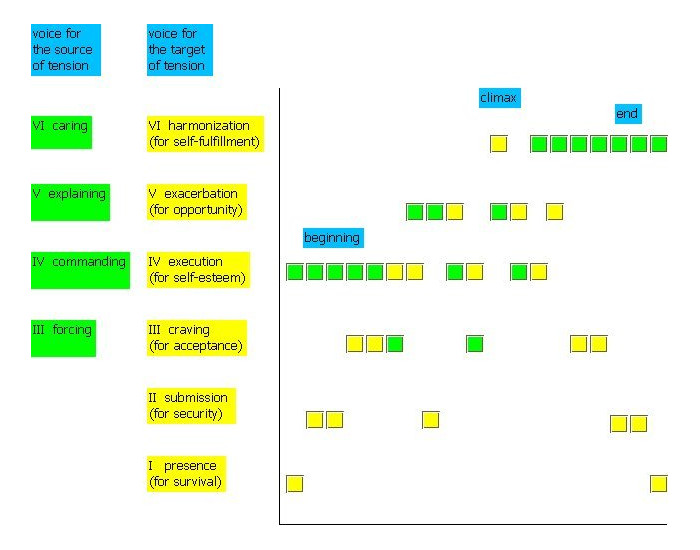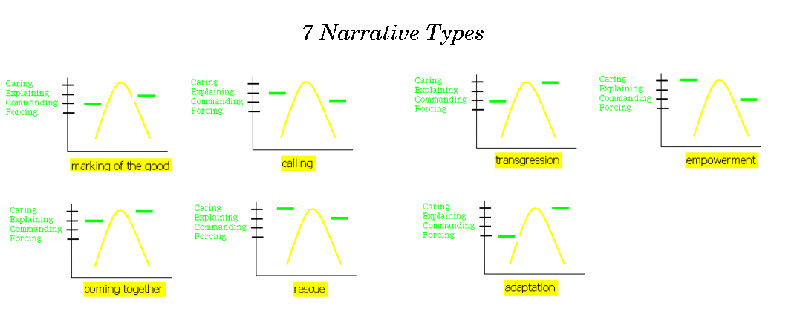- MathNotebook
- MathConcepts
- StudyMath
- Geometry
- Logic
- Bott periodicity
- CategoryTheory
- FieldWithOneElement
- MathDiscovery
- Math Connections
Epistemology
- m a t h 4 w i s d o m - g m a i l
- +370 607 27 665
- My work is in the Public Domain for all to share freely.
- 读物 书 影片 维基百科
Introduction E9F5FC
Questions FFFFC0
Software
PLM4 - Fourth Philosophy of Language and Mind Conference, September 21-23, Bochum, Germany.
A Theory of Narrative: How Do Things Happen? Shifts in Tones of Voice.
How does the mind interpret a story? How does it conceive that something has taken place? We present results from our analysis of 81 Lithuanian folk tales collected by Jonas Basanavicius. Our main result is that tension is created in the beginning of a story by a consistent tone of voice (either forcing, commanding, explaining or caring), and it is likewise created in the end of a story by a consistent yet different tone of voice. These two different tones of voice are what determine the content of the story.
We wish to analyze not so much the text itself but rather any listener's or reader's interpretation of the text. The first step is to break the story into narrative units. We do this by noting where we sense that tension is created and relaxed. The rhythm of creating and relaxing tension is essential for us to maintain interest in the story.
Each narrative unit thus includes a character who creates tension, a character who is the target of the tension, and a third character who resolves the tension by siding with one or the other. The third character may in fact be one of the other two.
There are four tones of voice which create tension. For example, in order to get one to take their coat off, we could:
- Force them, as when the sun beats down so hard that they can't bear to wear it.
- Command them: Take that coat off!
- Explain to them: If you took your coat off, you wouldn't feel so warm.
- Care about them, as when asking: Would you like to take your coat off?
The nominal characters may change from unit to unit, but what is remarkable is that the tone of voice which creates tension stays constant in the beginning of the story, is varied in the middle of the story, and becomes constant but different in the end of the story. We illustrate this with the green squares in our graph for the story, The Witch and Johnny.

The target of tension can be understood, in each narrative unit, as expressing a disposition which accords with Maslow's hierarchy of needs. As the story unfolds, we experience the target of tension as developing. It's lowest voice (for survival) is just a physical presence - Johnny is the child whose mother died. Then with its 2nd voice (for security) it can submit - Johnny has a mean stepmother. Then it has a 3rd voice (for social needs) which craves, reminiscent of Freud's id - Johnny's father puts him on a raft in a lake and calls him with cries of milk. Next, it has a 4th voice (for self-esteem)which can trick or be tricked, reminiscent of Freud's superego - Johnny bakes the witch's daughter. It's 5th voice (for freedom), reminiscent of Freud's ego, can exacerbate the tension - Johnny has the witch's guests think they are eating Johnny. Finally, there is the 6th voice (for self-fullfillment) that integrates all of the voices - here it is the witch who is the target of tension, when she realizes that she has eaten her daughter. The climax of the story is when this 6th voice is the target of tension. Afterwards, the character collapses, in the reverse order, yielding a bell curve, as illustrated by the yellow squares.
We can categorize stories based on the green squares, the tones of voice that creates tension at the beginning of the story and at the end of the story. We find examples of all six ways of relating commanding, explaining and caring. The Witch and Johnny starts with commanding and ends with caring, and like other such stories, is a transgression story. If it started with commanding and ended with explaining, as in the case of Cinderella, (explaining that "the shoe fits!"), it would be a "marking of the good", a baptism story. We also find examples of a seventh story that starts with forcing and ends with caring, a marriage story, as in the most famous Lithuanian folk tale "Egle, Queen of Serpents". The seven story types can be understood as anthropological rites or sacraments.

We discuss the methodology used to determine the various voices. The method is self-reinforcing because we, as researchers, but also, listeners and readers, can rely on the constancy constraints to develop understandings of how to interpret forcing, commanding, explaining and caring in particular cultures. For example, in these Lithuanian folk tales, crying is interpreted as commanding.
We also consider how to relate conceptual languages of narration (how do events happen?), verbalization (how do terms acquire meaning?) and argumentation (how do issues come to matter?)
